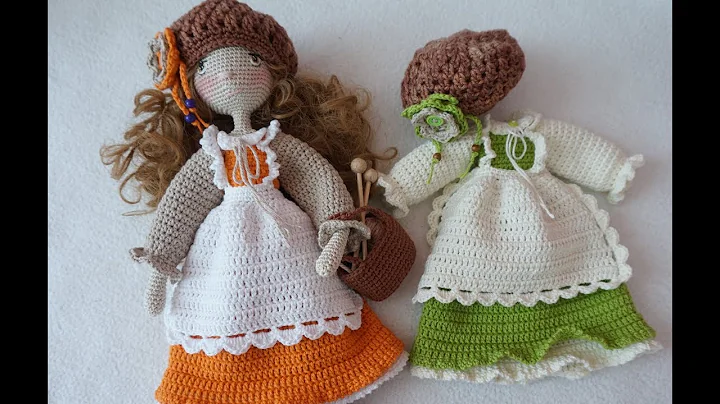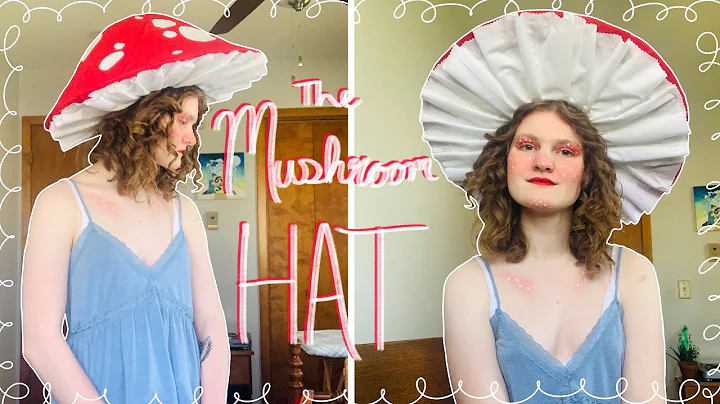Master the Loop Stitch: A Beginner's Guide to Crochet
Table of Contents:
- Introduction
- What is the Loop Stitch?
- Why Use the Loop Stitch?
- Materials Needed for the Loop Stitch
- How to Crochet the Loop Stitch
5.1 Step 1: Starting the Row
5.2 Step 2: Making the Loop with Your Thumb
5.3 Step 3: Inserting the Hook and Bringing up a Loop
5.4 Step 4: Completing the Loop Stitch
- Tips and Tricks for Crocheting with the Loop Stitch
- Examples of Projects Using the Loop Stitch
- Pros and Cons of the Loop Stitch
- Troubleshooting Common Issues with the Loop Stitch
- Conclusion
Introduction
Crocheting is a popular hobby that allows you to create beautiful and unique projects using yarn and a crochet hook. One stitch that adds a fun and whimsical texture to your projects is the loop stitch. In this article, we will explore what the loop stitch is, why you should use it, the materials needed for crocheting the loop stitch, and a step-by-step guide on how to crochet the loop stitch. We will also provide tips and tricks for crocheting with this stitch, showcase examples of projects using the loop stitch, discuss the pros and cons, and troubleshoot common issues that may arise. So, grab your yarn and crochet hook, and let's get started on this exciting crochet journey!
What is the Loop Stitch?
The loop stitch is a variation of the single crochet stitch that creates loops of yarn on the surface of your crochet project. These loops can be short or long, depending on your desired effect. The loop stitch adds texture and dimension to your projects, making them visually interesting and unique. It can be used to create various patterns, such as fur-like textures, fluffy clouds, or intricate designs. With this stitch, you can add a touch of whimsy to scarves, blankets, hats, and more!
Why Use the Loop Stitch?
There are several reasons why you should consider using the loop stitch in your crochet projects. Firstly, it adds a fun and playful texture, giving your creations a unique look. The loops create depth and visual interest, making your projects stand out from the crowd. Secondly, the loop stitch can be used to mimic the appearance of fur, perfect for animal-themed projects or adding a cozy touch to winter accessories. Additionally, the loop stitch is relatively easy to learn and master, making it accessible to both beginner and experienced crocheters. It provides an opportunity to experiment with different yarn textures and colors, allowing you to unleash your creativity and create truly one-of-a-kind pieces.
Materials Needed for the Loop Stitch
Before you start crocheting the loop stitch, you will need a few essential materials. Here's a list of what you'll need:
-
Yarn: Choose a yarn of your preference. Thicker yarns will create more pronounced loops, while thinner yarns will result in smaller loops.
-
Crochet Hook: Select a crochet hook size that complements your chosen yarn. Refer to the yarn label or crochet pattern for the recommended hook size.
-
Scissors: A pair of sharp scissors will come in handy for cutting the yarn at the end of your project.
-
Yarn Needle: You'll need a yarn needle for weaving in loose yarn ends and finishing your project neatly.
Ensure you have all these materials at hand before diving into the loop stitch.
How to Crochet the Loop Stitch
The loop stitch may seem intimidating at first, but with a little practice, you'll become comfortable creating it. Let's walk through the step-by-step process of crocheting the loop stitch.
Step 1: Starting the Row
To begin crocheting the loop stitch, chain one and turn your work. This step sets up the foundation for your loops and ensures they are aligned neatly across the row.
Step 2: Making the Loop with Your Thumb
Hold the yarn over your index finger and hook it on your pinky finger for tension control. Use your thumb to create the loop by bringing it straight down. Position your thumb at the desired length for your loops, but aim for consistency throughout your project. You can use the edge or a row as a guide for maintaining uniform loop lengths.
Step 3: Inserting the Hook and Bringing up a Loop
Insert your crochet hook into the first stitch, ensuring that the yarn is to the right of the hook. Bring up a loop by wrapping the yarn around the hook and drawing it through both loops on the hook. This step is similar to a single crochet stitch, with the added loop creation.
Step 4: Completing the Loop Stitch
Continue working across the row, repeating steps 2 and 3 for each stitch. Bring down the loop with your thumb, insert the hook into the next stitch, bring up a loop, and complete the loop stitch by wrapping the yarn around the hook and drawing it through both loops on the hook. Repeat this process until you reach the end of the row.
Tips and Tricks for Crocheting with the Loop Stitch
- Experiment with different yarn textures and colors to create unique effects with the loop stitch.
- Use a guide, such as the edge or a row, to maintain consistent loop lengths throughout your project.
- Practice holding the yarn and creating the loops until you find a method that suits your comfort and tension control.
- If your loops appear too wild or uneven, you can gently steam them with a steamer or hover a steam iron over them to relax and smooth them out.
- Take it slow at first and focus on achieving quality rather than speed. With practice, your speed will increase naturally.
Examples of Projects Using the Loop Stitch
The loop stitch can be used in various crochet projects to add texture and visual interest. Here are a few examples:
-
Loop Stitch Scarf: Create a cozy and stylish scarf using the loop stitch. The loops will add warmth and a touch of whimsy to your winter wardrobe.
-
Animal Amigurumi: Use the loop stitch to create fur-like textures on crocheted animal toys or amigurumi. This stitch is perfect for creating realistic lion manes, fluffy bunnies, or soft teddy bears.
-
Blankets and Throws: Incorporate the loop stitch into afghans, baby blankets, or throws to add an extra layer of texture and visual appeal. The loops will make your blanket stand out and provide extra warmth.
-
Hats and Headbands: Add a trendy twist to your hats and headbands by incorporating the loop stitch. This stitch works well for creating fluffy pom-poms or adding a fur-like trim.
Pros and Cons of the Loop Stitch
Pros:
- Adds a unique and playful texture to crochet projects.
- Gives projects a whimsical and eye-catching look.
- Can be used to mimic fur or add cozy warmth to winter accessories.
- Easy to learn and suitable for crocheters of all skill levels.
- Provides opportunities for creativity and experimentation with different yarn textures and colors.
Cons:
- Loops may require careful shaping to maintain a consistent appearance.
- May take some practice to achieve the desired tension and consistent loop lengths.
- Long loops may catch and snag easily, requiring extra care when handling the finished project.
While the loop stitch offers numerous advantages in terms of visual appeal and creativity, it's important to be aware of these potential challenges.
Troubleshooting Common Issues with the Loop Stitch
-
Inconsistent Loop Lengths: To ensure consistent loop lengths, use a guide, such as the edge or a row, as a reference. Practice creating loops at the same position with your thumb for a uniform appearance.
-
Loops Too Tight or Too Loose: Adjust your tension and the tightness of your loops to achieve the desired effect. Experiment with different yarns and hook sizes to find the right combination for your project.
-
Loops Getting Tangled: Take care when working with long loops to avoid tangling or snagging. Work slowly and gently to prevent any mishaps.
-
Uneven Rows: Pay attention to your tension and ensure that you're inserting your hook into the correct stitch for each row. Consistency in stitch placement will result in even rows.
Conclusion
Crocheting the loop stitch opens up a whole new world of creative possibilities for your projects. Whether you want to add texture to a scarf, create a fur-like surface on a toy, or experiment with unique patterns, the loop stitch is a fantastic technique to explore. By following the step-by-step guide, practicing, and utilizing the tips and tricks provided, you'll soon master the loop stitch and be able to incorporate it into a wide variety of crochet creations. So grab your yarn, hook, and imagination, and start creating stunning projects using the whimsical and playful loop stitch. Enjoy the journey of crocheting with this delightful stitch!
 WHY YOU SHOULD CHOOSE BEAUTYBADY
WHY YOU SHOULD CHOOSE BEAUTYBADY







